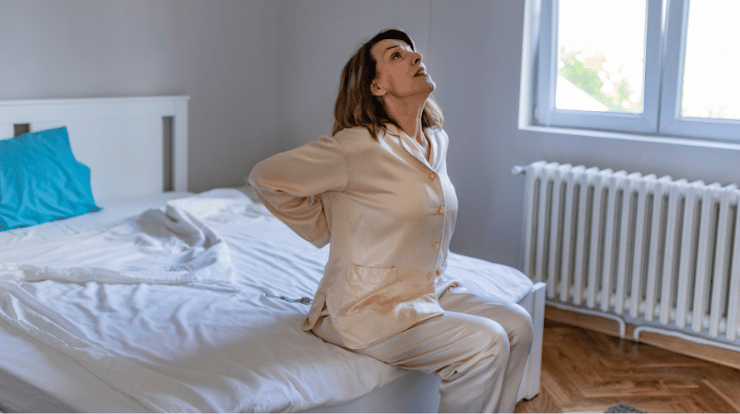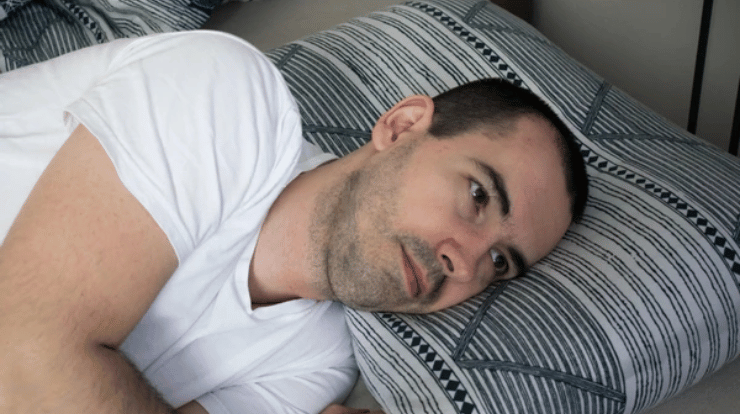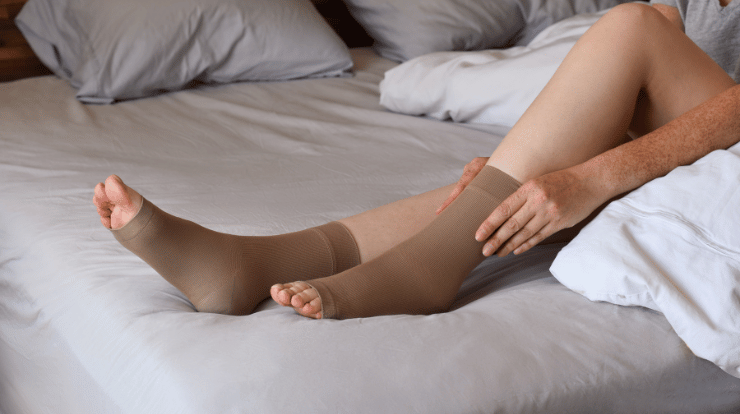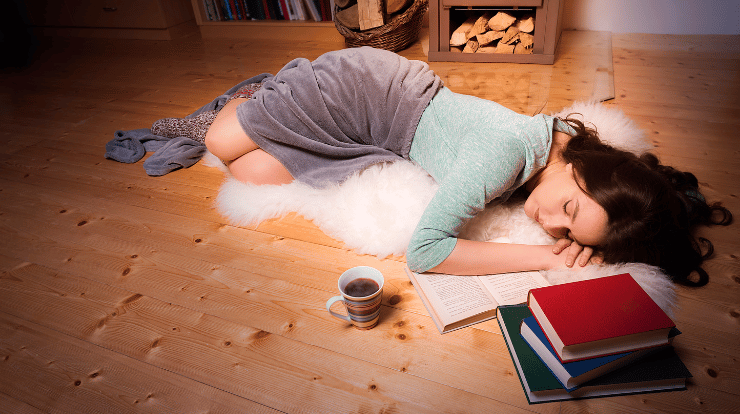
Sleep with lower back pain can become a real problem if you don’t take care of it. Suffering from lower back pain can make it difficult to get a good night’s sleep. The pain may make it hard to find a comfortable position, and it can also interfere with sleep cycles.
As a result, people with lower back pain often wake up feeling tired and unrested. There are a few things that can be done to help sleep with lower back pain. For example, sleeping on a firm mattress can help to reduce discomfort. In addition, placing a pillow under the knees can take some of the pressure off of the lower back. Finally, avoiding caffeine and alcohol before bed can help to promote relaxation and improve sleep quality.
How to sleep with lower back pain?
Sleeping with lower back pain can be challenging, but there are a few strategies that may help you sleep with lower back pain:
Use a supportive mattress: A mattress that is too soft or too hard can worsen back pain. Look for a medium-firm mattress that provides support to your natural curves.
Try a lumbar roll: A lumbar roll is a small, cylindrical cushion that you can place behind your lower back to help maintain its natural curve while you sleep.
Sleep on your side: Sleeping on your back can cause your lower back to arch, which can exacerbate pain. Try sleeping on your side with a pillow between your knees to help keep your spine in a neutral position.
Avoid sleeping on your stomach: This position can strain your lower back and neck.
Use a body pillow: A body pillow can help keep your spine aligned and support your knees, hips, and lower back.
Consider trying a new sleep position: If you usually sleep on your back, try sleeping on your side with a pillow between your knees. If you usually sleep on your side, try sleeping on your back with a pillow under your knees.
Use heat or cold therapy: Applying heat or cold to your lower back can help reduce pain and inflammation. You can use a heating pad, hot water bottle, or warm compress, or try taking a warm bath before bed. Cold therapy can be helpful if your back pain is the result of an injury or inflammation. Try applying an ice pack or a bag of frozen vegetables wrapped in a towel to your lower back.
Practice relaxation techniques: Stress and tension can make back pain worse. Try relaxation techniques, such as deep breathing, progressive muscle relaxation, or meditation, to help you relax before bed.
Talk to your doctor: If you’re having trouble sleeping despite trying these strategies, it’s a good idea to talk to your doctor. They may be able to suggest other treatment options or refer you to a specialist.
Top 5 Sleeping Positions for Back Pain
Here are some sleeping positions that may help you sleep with lower back pain:

1. Sleeping on your back with a pillow under your knees:
This position helps to maintain the natural curve of your lower back and reduces pressure on your spine.
2. Sleeping on your side with a pillow between your knees:
This position also helps to maintain the natural curve of your lower back and can be particularly helpful if you have sciatica.
3. Sleeping in the fetal position:
This position can help reduce pressure on your lower back and hips. To do this, lie on your side with your knees bent and drawn up towards your chest.
4. Sleeping in the “spooning” position:
If you sleep with a partner, this position can be helpful for back pain. To do this, lie on your side with your partner facing your back, and have them curl their body around yours.
5. Sleeping on an adjustable bed:
An adjustable bed can allow you to change the angle of your upper body and legs to help reduce pressure on your lower back.
It’s important to find a position that is comfortable and feels good for you. You may need to try a few different positions to find one that works best for your back pain. If you’re still experiencing pain after trying these positions, it’s a good idea to talk to your doctor. They may be able to suggest other treatment options or refer you to a specialist.
Best pillow for lower back pain when sleeping
There are several pillows available on Amazon that may be helpful for people with lower back pain when sleeping. Here are a few options:
1. Memory foam lumbar roll: This small, cylindrical pillow is designed to support the natural curve of your lower back and help reduce pain and discomfort while sleeping.

2. Contour memory foam pillow: This pillow is shaped to support the natural curvature of your neck and spine, and can be particularly helpful for people with lower back pain.

3. Body pillow: A body pillow is a long, cylindrical pillow that can be used to support your head, neck, and spine, as well as your knees, hips, and lower back.

4. Wedge pillow: A wedge pillow is a triangular pillow that can be used to elevate your upper body and reduce pressure on your lower back.

5. Orthopedic pillow: An orthopedic pillow is a pillow that is designed to support the natural curvature of your neck and spine, and may be helpful for people with lower back pain.

How to sleep with lower back pain during the period?
Many women have a question that how to sleep with lower back pain during the period. It’s important to note that the best pillow for you will depend on your individual needs and preferences. It may be helpful to try a few different options to see what works best for you.
Sleeping with lower back pain during your period can be especially challenging. Here are a few strategies that may help you get a better night’s sleep:
Use a supportive mattress: A mattress that is too soft or too hard can worsen back pain. Look for a medium-firm mattress that provides support to your natural curves.
Try a lumbar roll: A lumbar roll is a small, cylindrical cushion that you can place behind your lower back to help maintain its natural curve while you sleep.
Sleep on your side: Sleeping on your back can cause your lower back to arch, which can exacerbate pain. Try sleeping on your side with a pillow between your knees to help keep your spine in a neutral position.
Use a body pillow: A body pillow can help keep your spine aligned and support your knees, hips, and lower back.
Consider trying a new sleep position: If you usually sleep on your back, try sleeping on your side with a pillow between your knees. If you usually sleep on your side, try sleeping on your back with a pillow under your knees.
Use heat or cold therapy: Applying heat or cold to your lower back can help reduce pain and inflammation. You can use a heating pad, hot water bottle, or warm compress, or try taking a warm bath before bed. Cold therapy can be helpful if your back pain is the result of an injury or inflammation. Try applying an ice pack or a bag of frozen vegetables wrapped in a towel to your lower back.
It’s also important to manage your menstrual cramps, as they can contribute to lower back pain. Over-the-counter pain medication, such as ibuprofen or acetaminophen, can be helpful for managing cramps. You may also want to try using a heating pad or taking a warm bath to relax your muscles. If you’re still experiencing severe cramps or back pain despite trying these strategies, it’s a good idea to talk to your doctor. They may be able to suggest other treatment options.






